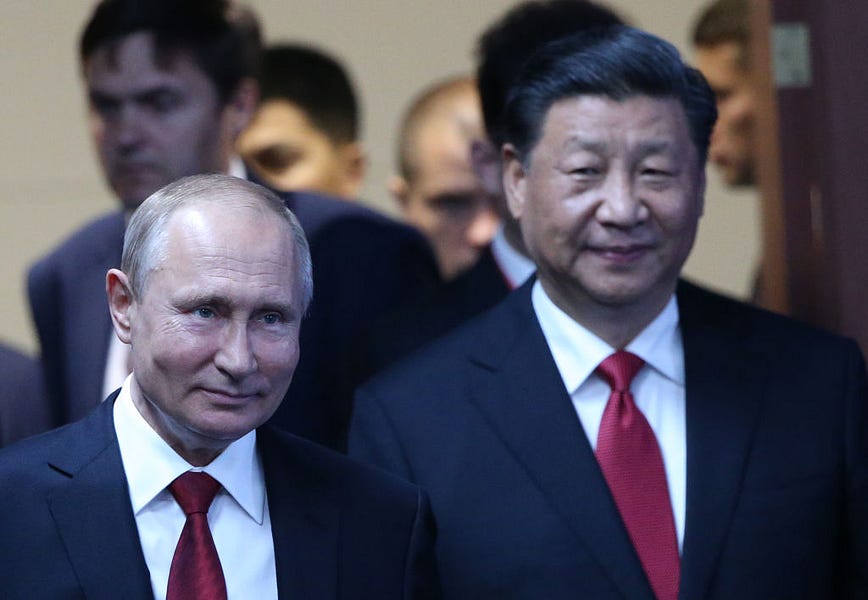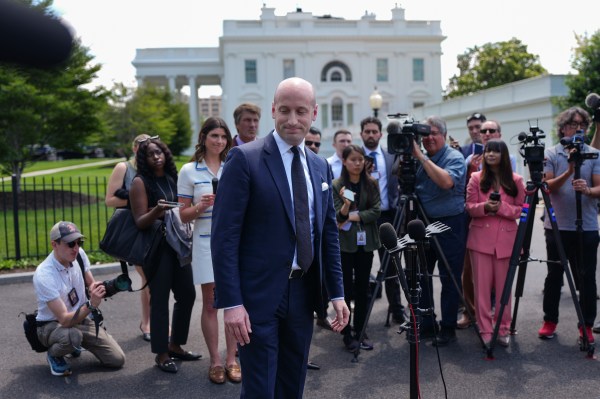When Russia invaded Ukraine, I suggested it marked the dawn of a new Cold War and warned that we were losing. In just the last few days, the United States and the world have shown they know how to fight back.
The global response amounts to a declaration of economic war against the Russian Federation. Policymakers are working to sanction Russia’s Central Bank and kick other Russian banks out of SWIFT, a mechanism for settling international transactions. Nation after nation announced sanctions, freezing assets, banning commerce with the Russian military, and imposing export controls to cut off Russia’s access to high technology. Other sanctions target individual Russian elites, including Putin. The White House announced a multilateral task force to hunt down and seize Russian oligarchs’ yachts, mansions, and other assets. The Russian stock market lost a third of its value and the ruble fell to its lowest value ever.
The global response also includes monumental changes in Europe’s military and diplomatic landscape. Finland and Sweden are moving toward NATO, which Russia warned would provoke “serious military-political consequences.” NATO activated its response force for the first time in its history and the U.S. and U.K. sent troops to Eastern Europe to reassure allies and deter Russia from expanding the war. The United States, the Netherlands, Poland, and other European allies are openly arming Ukraine with anti-tank missiles and other weapons, not even hiding their effort to help Ukraine kill Russian soldiers. The overt nature of the military support is notable enough.
But, in a shocking development, Germany has now announced its intent to send weapons to Ukraine, halted the Nord Stream 2 gas pipeline from Russia, and announced it will dramatically ramp up defense spending. The increase in its defense spending is a move that American presidents and secretaries of defense have been demanding for nearly eight decades. Germany had been notorious for a quasi-pacifist foreign policy that was paralyzing NATO’s ability to act, and for its economic entanglement with Russia. Germany’s moves may amount to a tectonic geopolitical shift, a fundamental reorientation of Germany’s thinking about its role in Europe and in the world. Russia has never feared Europe, but it may fear a reawakened Germany.
Taken together, these steps are both frightening and welcome. They are frightening because they illustrate how rapidly the world’s security has deteriorated and how quickly policymakers around the world have recognized the dangers, not only of Russia’s invasion of Ukraine, but of the weakening of the principle of national sovereignty. They are frightening because the world has taken several steps closer to general war.
But these moves are also welcome because they show the way forward in the new Cold War. No one wants general war, yet we must fight back somehow. Fighting back in ways that do not risk general war means fighting with every other weapon in our arsenal, including the tools of economic and diplomatic statecraft. The main questions now are: What else can we do? Where else should we do it? And when will we recognize the need to do the same to China?
What else can we do? Now would be a good time for President Joe Biden to announce a long-overdue increase in the U.S. defense budget, reversing the almost-unbroken three-decade-long downward trend in defense spending. (The wars in Iraq and Afghanistan were surprisingly small and temporary blips in the overall downward trajectory). It would also be a good moment to fully fund the modernization of the U.S. nuclear arsenal.
The military budget is in comparably good shape compared to what the U.S. spends on diplomacy and development. An ounce of prevention is worth a pound of cure: For many of the world’s troubles, diplomacy and development are the prevention, the military is the cure. Yet we have unilaterally disarmed ourselves of our tools of prevention over the past 30 years. If the new Cold War is likely to be as long and wide-ranging as the last one, we need the tools to wage it around the world and with all means necessary, and that will mean a dramatic increase in spending on our tools of soft power.
Where should we fight? After Ukraine, the next most important frontline is the Baltic states. Putin has made clear over the years that the inclusion of former Soviet republics in NATO—Latvia, Lithuania, and Estonia joined in 2004—was just as offensive to him as the possibility of Ukraine’s accession. But since they have already joined, the U.S. must be ready to treat the defense of the Baltics on par with the defense of New York or Chicago. We might consider a permanent NATO troop presence and advanced missile defense systems there, to start with.
Beyond that, the U.S. might review its stance toward Venezuela, one of the very few nations to support Russia’s invasion of Ukraine. Venezuela has become, more or less, a Russian client state, in addition to being one of the two non-democratic holdouts in the Western hemisphere and an exporter of refugees and instability. Washington opted for a lighter touch when the crisis there came to a boil in 2017 and 2018. That might merit reevaluation.
But the biggest question of the new Cold War is whether or not we are prepared to recognize that China is the much bigger threat and merits the same level of isolation and pressure as we have mounted against Russia in the past few days. Russia, as a declining power, is the more dangerous near-term threat, while China, as a rising power that can afford to wait, is the more dangerous long-term threat. Even so, no one doubts China’s impressive record of genocide, criminality, totalitarianism, corporate and industrial espionage, trade manipulation, and disregard for international law. Some might suggest that, while China’s sins are bad, Russia’s blatant aggression is qualitatively different. The peoples of Tibet, Hong Kong, and Taiwan likely disagree, as do the Philippines, Vietnam, and other rightful claimants to the South China Sea.
Pushing back on China in East Asia is just as vital to American security as pushing back on Russia in Europe. The two regions are the greatest concentrations of wealth, power, and danger in the world, outside of North America. Virtually all of America’s international trade is with those two regions (and NAFTA). Virtually all of its closest allies are in those two regions. Virtually all of the world’s nuclear weapons states are in those two regions. A major conventional war in either of those regions could devastate the planet.
If the world had adopted the measures it has taken against Russia three months earlier, it is likely Russia would not have invaded. Timing is everything, and it is too late to spare Ukraine the destruction and loss of life it is now suffering. But it is not too late to be proactive against China. Its record of tyranny and aggression is well known, and we all know where this is headed.
The best way to protect Taiwan is, of course, to win the war in Ukraine. But we cannot assume that outcome, and we should not wait for China to provoke the showdown over Taiwan. By that time, it will have already massed its army and navy, built up its ballistic missile and nuclear forces, and made it vastly harder and more expensive to contain. We have an opportunity now, before the crisis comes, to take the initiative. Critics will respond that treating China with hostility will only provoke China into open enmity and give it no choice. The same argument was used to delay action against Russia. China has already made its choice; we only have to choose to respond now, while we have a new sense of momentum and unity, or delay until China chooses the crisis for us.






Please note that we at The Dispatch hold ourselves, our work, and our commenters to a higher standard than other places on the internet. We welcome comments that foster genuine debate or discussion—including comments critical of us or our work—but responses that include ad hominem attacks on fellow Dispatch members or are intended to stoke fear and anger may be moderated.
With your membership, you only have the ability to comment on The Morning Dispatch articles. Consider upgrading to join the conversation everywhere.